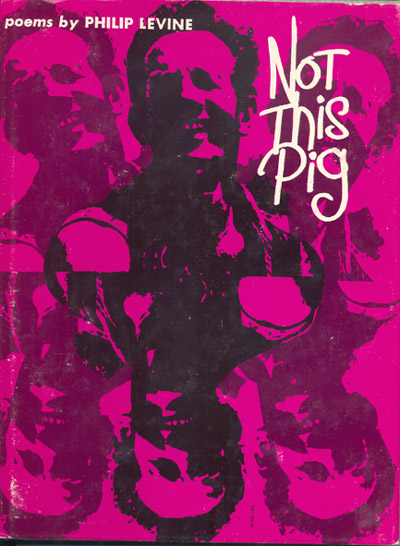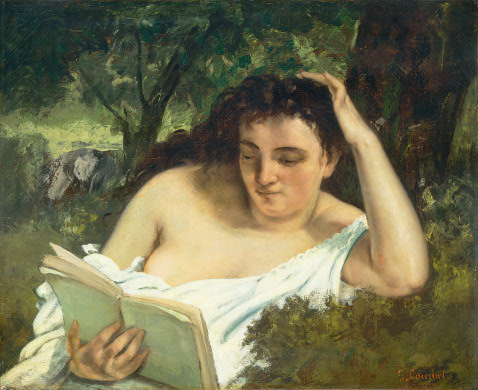Charles Marville. The Seine from the Pont du Carrousel Looking towards Notre Dame. 1853. Salted paper print from paper negative mounted on paperboard. [Source: National Gallery of Art]
- Charles Marville: Photographer of Paris | NGA 2013
Around 1832 Parisian-born Charles-François Bossu (1813–1879) shed his unfortunate last name (bossu means hunchback in French) and adopted the pseudonym Marville. After achieving moderate success as an illustrator of books and magazines, Marville shifted course in 1850 and took up photography, a medium that had been introduced 11 years earlier. His poetic urban views, detailed architectural studies, and picturesque landscapes quickly garnered praise. Although he made photographs throughout France, Germany, and Italy, it was his native city—especially its monuments, churches, bridges, and gardens—that provided the artist with his greatest and most enduring source of inspiration. By the end of the 1850s, Marville had established a reputation as an accomplished and versatile photographer. From 1862, as official photographer for the city of Paris, he documented aspects of the radical modernization program that had been launched by Emperor Napoleon III and his chief urban planner, Baron Georges-Eugène Haussmann. In this capacity, Marville photographed the city’s oldest quarters, and especially the narrow, winding streets slated for demolition. Even as he recorded the disappearance of Old Paris, Marville turned his camera on the new city that had begun to emerge. Many of his photographs celebrate its glamour and comforts, while other views of the city’s desolate outskirts attest to the unsettling social and physical changes wrought by rapid modernization. Taken as a whole, Marville’s photographs of Paris stand as one of the earliest and most powerful explorations of urban transformation on a grand scale.
- Marville’s Vanished Paris by Luc Sante | NYRgallery | The New York Review of Books 091713
Luc Sante: “Charles Marville is best known for his government commission to photograph the neighborhoods of Paris slated for demolition during Baron Haussmann’s reconfiguration of the city between 1853 and 1870. | His technical mastery of the medium was such that he made cloud studies of the sky over the Invalides fifty years before clouds featured much in photography, since they tended not to cooperate with the long exposure times. But as rich and fascinating as are those aspects of his work, it is still the documentation of old Paris that secures his place in the highest rank of photographic achievement. His exquisitely nuanced and lavishly detailed views of the alleys and impasses of the Cité anticipate Atget so completely you’d occasionally swear they were the same person. His scenes of the industrialized and fearsomely polluted Bièvre River (now driven underground) draw a sort of pastoral beauty from a resolutely unbeautiful subject. His huge, animated scenes of the destruction of the Butte-des-Moulins slum draw inescapable attention to the resemblances between urban renewal and war.”
- An Insider’s View Of 19th-Century Paris (Even The Urinals) : The Picture Show : NPR 093013
A city under construction — and destruction — is currently on view at the National Gallery of Art in Washington. “” is a collection of 19th-century photographs of one of the world’s most beloved cities as it transitioned from medieval architectural hodgepodge to what became the City of Light.
Charles Marville made more than 425 photographs of the narrow streets and crumbling buildings of premodern Paris, including this view from the top of Rue Champlain in 1877-1878. [Source: National Gallery of Art/NPR]
Paris’ public urinals, seen here in an 1876 photograph by Charles Marville, helped cement its reputation as the most modern city in the world. [Source: National Gallery of Art/NPR]
The elegant gas lamps of Paris’ Haussmann transformation, seen here in 1877-1878, also contributed to its reputation as a modern metropolis. [Source: National Gallery of Art/NPR]
![Charles Marville. The Seine from the Pont du Carrousel Looking towards Notre Dame. 1853. Salted paper print from paper negative mounted on paperboard. [Source: National Gallery of Art] http://www.nga.gov/content/ngaweb/exhibitions/2013/marville.html](../../../../wp-content/uploads/2013/10/charles_marville_-seine_from_pont_du_carrousel_1853.jpg)
![Charles Marville made more than 425 photographs of the narrow streets and crumbling buildings of premodern Paris, including this view from the top of Rue Champlain in 1877-1878. [Source: National Gallery of Art/NPR] http://www.npr.org/blogs/pictureshow/2013/09/30/226976849/an-insiders-view-of-19th-century-paris-even-the-urinals](../../../../wp-content/uploads/2013/10/charles_marville_paris_view_from_rue_champlain_1877.jpg)
![Paris' public urinals, seen here in an 1876 photograph by Charles Marville, helped cement its reputation as the most modern city in the world. [Source: National Gallery of Art/NPR] http://www.npr.org/blogs/pictureshow/2013/09/30/226976849/an-insiders-view-of-19th-century-paris-even-the-urinals](../../../../wp-content/uploads/2013/10/charles_marville_paris_public_urinal_1876.jpg)
![The elegant gas lamps of Paris' Haussmann transformation, seen here in 1877-1878, also contributed to its reputation as a modern metropolis. [Source: National Gallery of Art/NPR] http://www.npr.org/blogs/pictureshow/2013/09/30/226976849/an-insiders-view-of-19th-century-paris-even-the-urinals](../../../../wp-content/uploads/2013/10/charles_marville_paris_gas_lamps_1877.jpg)
![gustave_caillebotte_paris_street_rainy_day Gustave Caillebotte. Paris Street, Rainy Day (La Place de l’Europe, temps de pluie). 1877. Oil on canvas. Art Institute of Chicago. [Source: Wikimedia Commons]](../../../../wp-content/uploads/2009/02/gustave_caillebotte_paris_street_rainy_day_1877_wiki.jpg)
![Fog at Isle Royale [Source: wildmengoneborneo.com] Fog at Isle Royale [Source: wildmengoneborneo.com]](../../../../wp-content/uploads/2008/04/isle_royale_fog.jpg)
 If there is an emerging genetic underclass, I could run for class president or class clown. Read more in
If there is an emerging genetic underclass, I could run for class president or class clown. Read more in 
